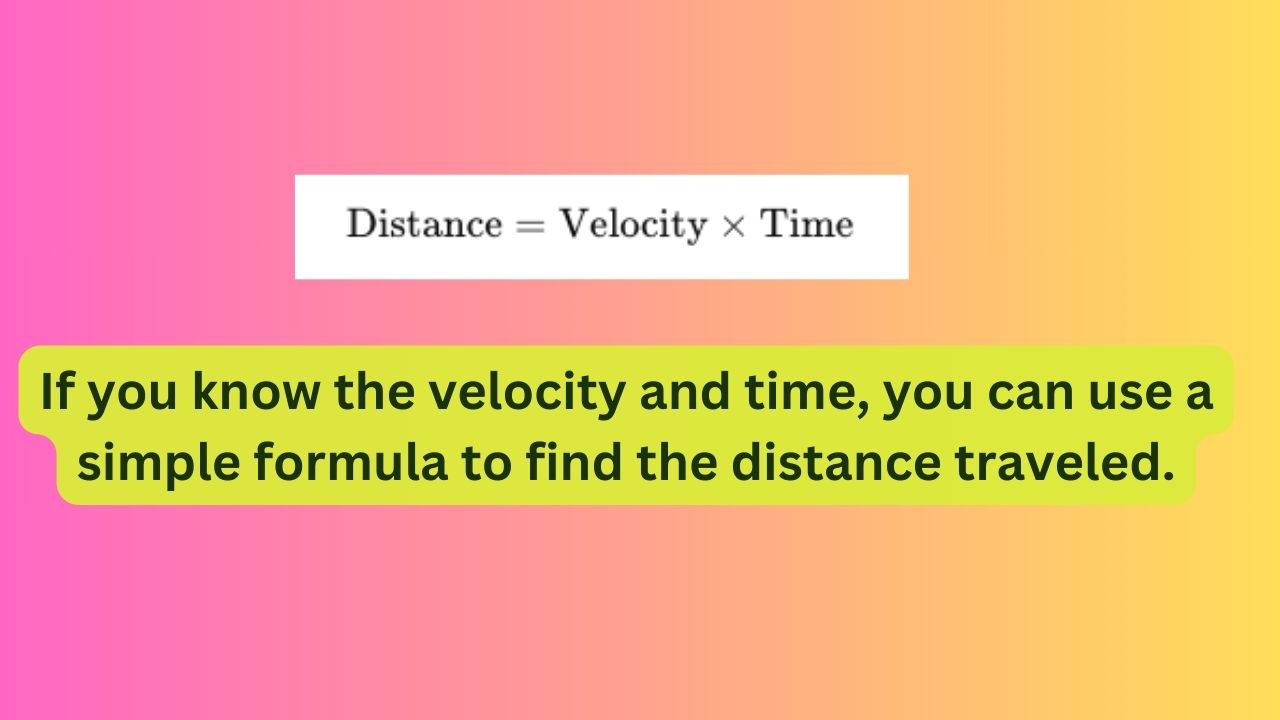he formula for calculating distance when you know velocity (vv) and time (tt) is:

Here’s a simple experiment you can conduct to demonstrate this concept:
Experiment: Constant Velocity Motion
Materials Required:
- Open space or a hallway with a known length (e.g., a school corridor)
- Stopwatch or timer
- Measuring tape or ruler
Procedure:
- Choose a starting point in the open space or hallway. This could be a clearly defined spot, such as the beginning of a hallway or a specific point on the ground.
- Stand at the starting point and start the stopwatch or timer.
- Walk at a constant velocity (steady pace) for a specific period of time. You can choose any velocity you like, but it should remain constant throughout the experiment.
- Stop the stopwatch or timer after the predetermined time period.
- Measure the time taken using the stopwatch or timer. Record the time in seconds.
- Measure the distance traveled from the starting point to the stopping point using a measuring tape or ruler. Record the distance in meters or feet.
Calculating Distance:
Once you have recorded the velocity and time, you can use the formula to calculate the distance traveled:

Physics Concepts:
- Distance: Distance is the total length of the path traveled by an object. In this experiment, distance is calculated using the velocity and time.
- Velocity: Velocity is the rate of change of displacement with respect to time. It tells us how fast an object is moving and in which direction. In this experiment, velocity is constant, meaning the speed and direction do not change.
- Time: Time is the duration of an event, measured in seconds. It is used to calculate the total duration of the motion in this experiment.
- Calculation: By multiplying velocity and time, you can calculate the distance traveled. This demonstrates the relationship between velocity, time, and distance.
By conducting this simple experiment and calculating distance using velocity and time, students can gain a practical understanding of how these factors are related and how to apply the relevant formula to solve real-world problems.


No responses yet